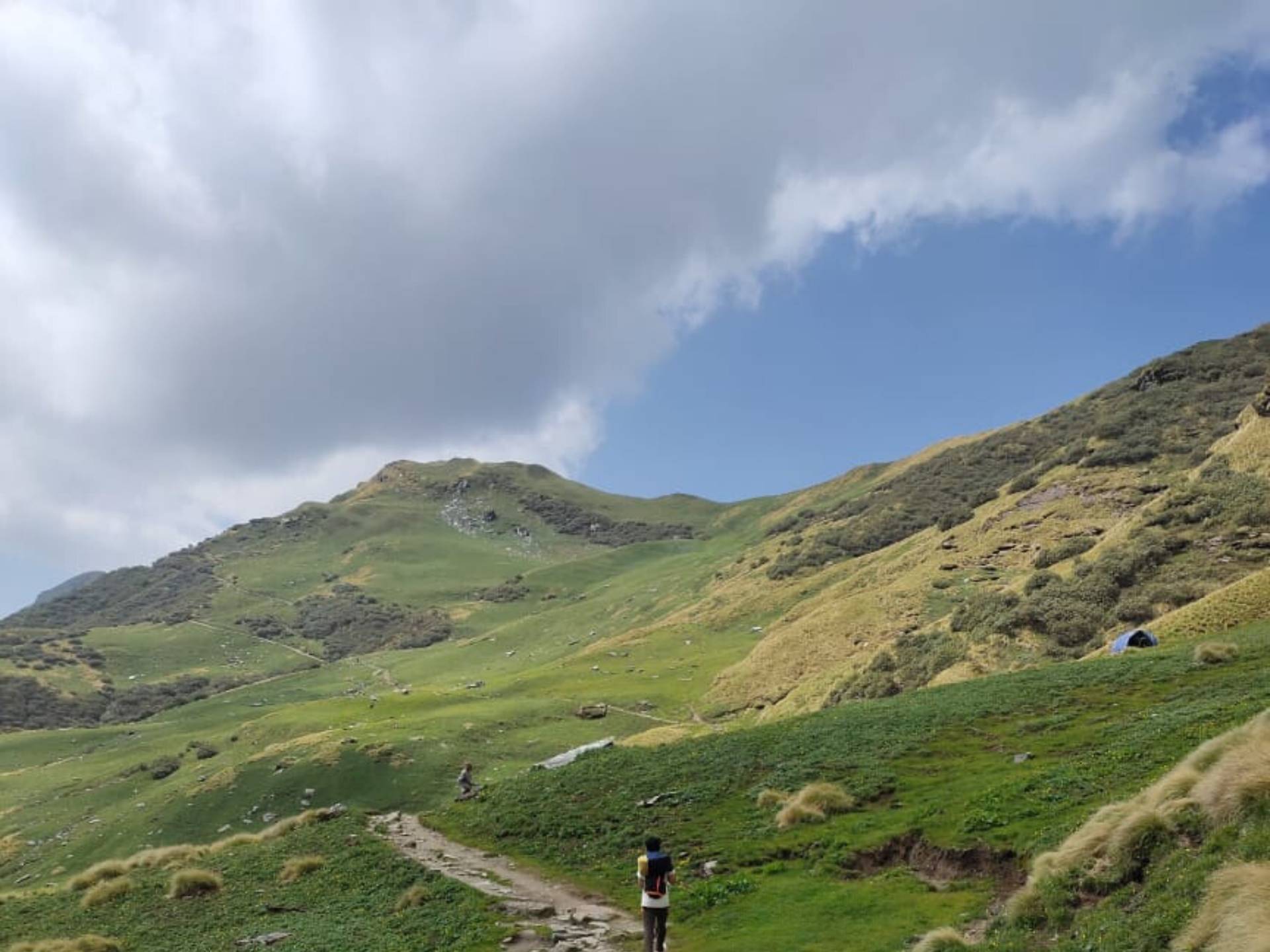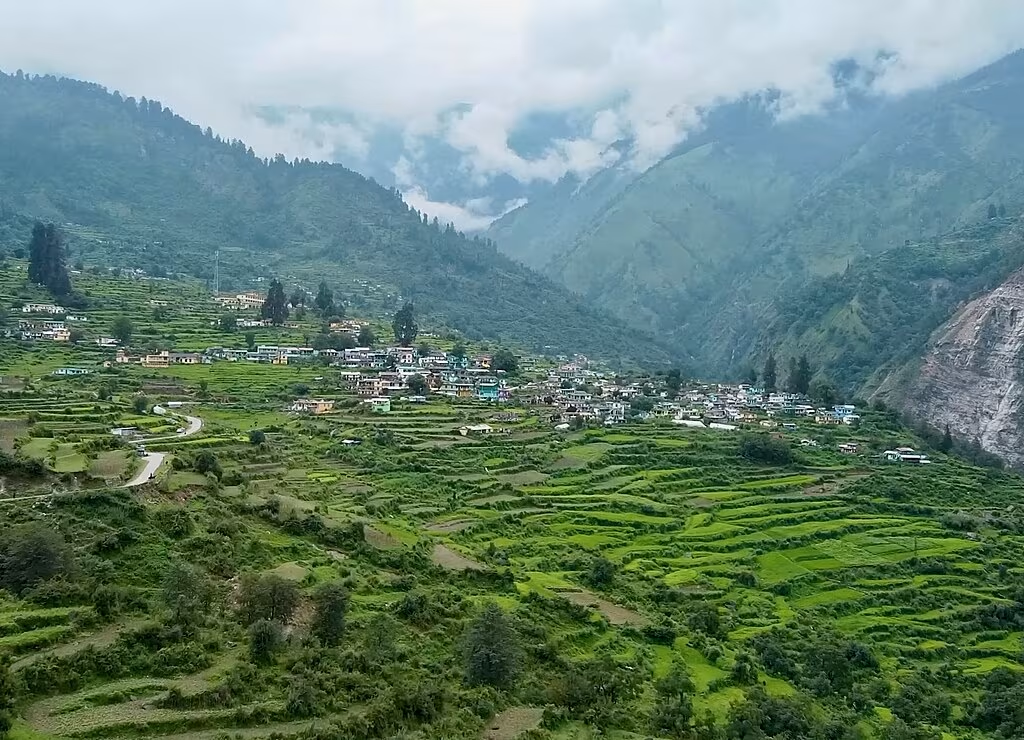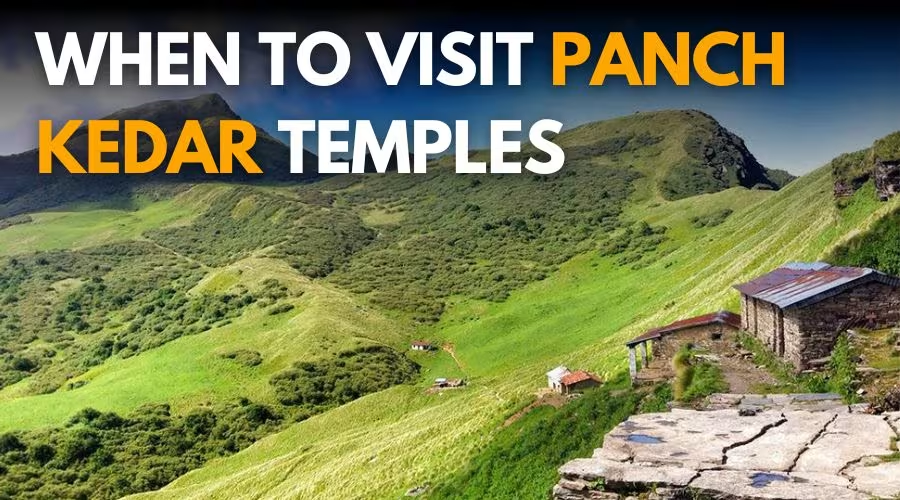The perfect combination of trekking and spirituality, the Panch Kedar is a journey to remember. A group of five holy temples, the trek is devoted to Lord Shiva. Besides Kedarnath, which is one of the most sacred sites for Lord Shiva devotees, the holy circuit includes Rudranath, Tungnanth, Madhyamaheswar, and Kalpeshwar.
Nestled in the laps of the Garhwal Himalayas, the five shrines together have an average, approximate altitude of 3500 metres. With high altitudes also comes the importance of analysing the weather before planning your trip. Find out more about the Panch Kedar trek, the best time to visit it, and some essential tips for a comfortable and smooth journey.
Panch Kedar at a glance
| Temples | Kedarnath | Tungnath | Rudranath | Madhyamaheswar | Kalpeshwar |
| Region | Rudraprayag district | Rudraprayag district | Chamoli district | Rudraprayag district | Chamoli district |
| Altitude | 3,583 meters | 3,680 meters | 2,286 meters | 3,490 meters | 2,200 meters |
| Religious significance | One of the 12 jyotirlingas; represents the hump of Lord Shiva’s bull form | The highest temple of Shiva in the world; represents Shiva’s arms | The temple is to worship Lord Shiva’s face | The temple represents Shiva’s navel. | Devoted to the worshipping of Lord Shiva’s hair (jata). |
| Opening dates | 2 May, 2025 | 10 May, 2025 | 18 May, 2025 | 20 May, 2025 | Open on all days of the year. |
Best time to trek Panch Kedar
Before you start planning your Panch Kedar trek, consider the weather. Since the temples are in the Himalayas, the weather can be fickle, and planning is important for a smooth and safe journey.
The best time to visit: May to June (summer season)

- Weather: Pleasant temperatures ranging from 10°C to 20°C.
- Trekking conditions: The path is clear since the snow has begun to melt. Hence, the ideal time for trekking or any outdoor activities.
- Scenery: Blooming rhododendrons and lush greenery adds to your trekking experience
- Temples: All five temples are open for darshan during this time of the year.
The second best time to visit: September to October

- Weather: Temperatures in the range of 5°C and 15°C offer cool and crisp weather.
- Trekking conditions: The skies are clear with minimum rainfall. You can enjoy comfortable trekking since the tourist crowd is less during this time.
- Scenery: The clear weather offers charming views of the Himalayas, along with the vibrant hues of nature.
- Temples: The temples remain open until late October.
Challenging and better to avoid: July to August (monsoon season)

- Weather: Temperatures are around 10°C and 18°C. However, the monsoon brings in heavy rainfall in most regions, with greater chances of landslides and flash floods.
- Trekking conditions: Trekking is risky in the monsoons. Landslides are common due to rain, and trekking routes are slippery.
- Travel: Travelling in the Panch Kedar regions during monsoons is highly risky. Plus, the weather might cause delays.
- Temples: The temples route becomes inaccessible due to heavy rainfalls, mist and flash floods.
Closed and should be avoided: December to April (winter season)

- Weather: The average temperatures drop to -20°C to -5°C. The weather is extremely cold, with heavy snowfall on most trekking routes.
- Trekking conditions: Almost every trekking route is closed during the winters. The risk of blockage increases due to the snowfall.
- Travel: Travelling is highly risky since roadways could become blocked due to the snowfall.
- Temples: Except the Kalpeshwar and Tungnath temples, all Panch Kedar temples are inaccessible during the winters. The sacred symbols of these temples are worshipped at lower-altitude locations. For example, the symbol of Kedarnath temples is worshipped at the Omkareshwar temple in Ukhimath. Similarly, for Tungnath the location is Makumath, for Rudranath at Gopeshwar, and for Madhyamaheswar at Ukhimath.
Essential safety tips for Panch Kedar
- The 95-kilometre Panch Kedar trek requires maximum preparation and caution. A basic level of fitness is necessary, so invest your time in some regular cardio and strength training exercises to build stamina.
- Carry warm layers, because the high-altitude locations of the Panch Kedar trek offer cold temperatures to its visitors. Pack some layered clothing, waterproof jackets, strong trekking boots, and an equally strong backpack.
- Spend a day or two at moderate altitudes. This gives you sufficient time to adjust to the high altitudes. With this, you can prevent altitude sickness, too.
- Start your day early. The Himalayan weather is fickle and could change within the day. Early trekking will help you avoid the weather changes throughout the day.
- Follow all local customs and rules, especially those of the temples. Hire experienced local guides for a safe journey. They even help you learn about the local culture to enhance your experience.
Enrich your mind and soul with the rich cultural and spiritual heritage the trek offers. To get the most out of your Panch Kedar yatra, plan your trip at the right time. Follow this guide to choose the best time for your visit so you can enjoy a memorable and safe trip.
Need help planning your Panch Kedar Yatra at the best suitable time? We at Himalayan Dream Treks offer you customised travel plans so you can get the most out of your trips. Contact us at info@himalayandreamtreks.in or +91 80896 93825.

Leave a Comment